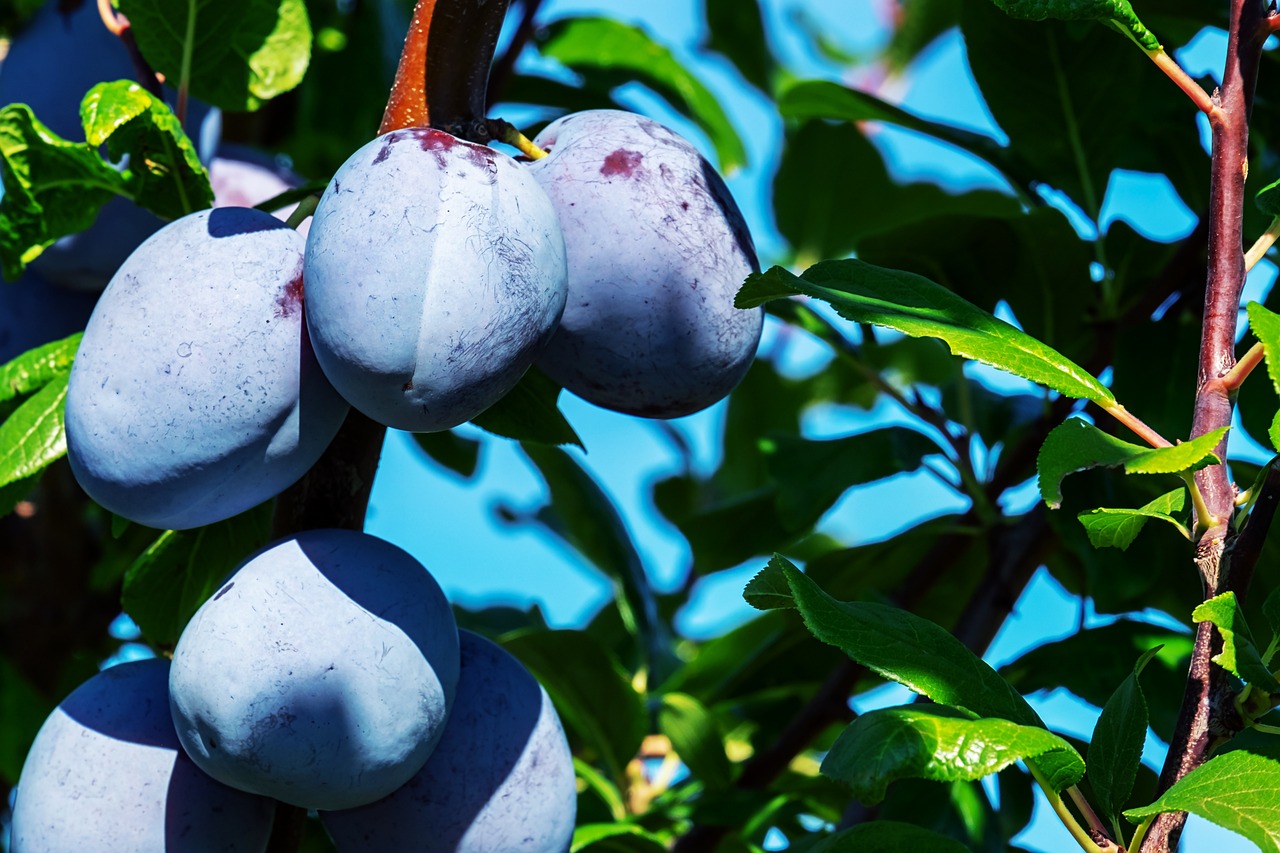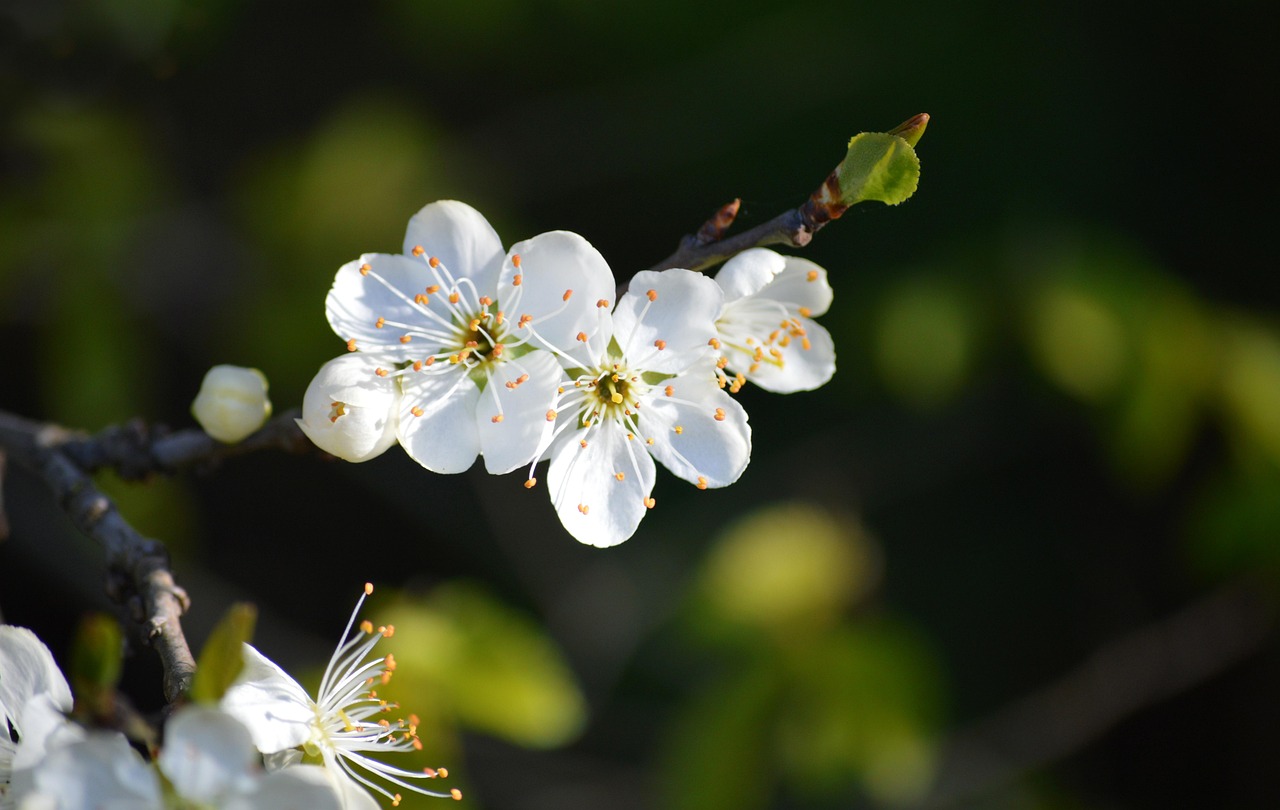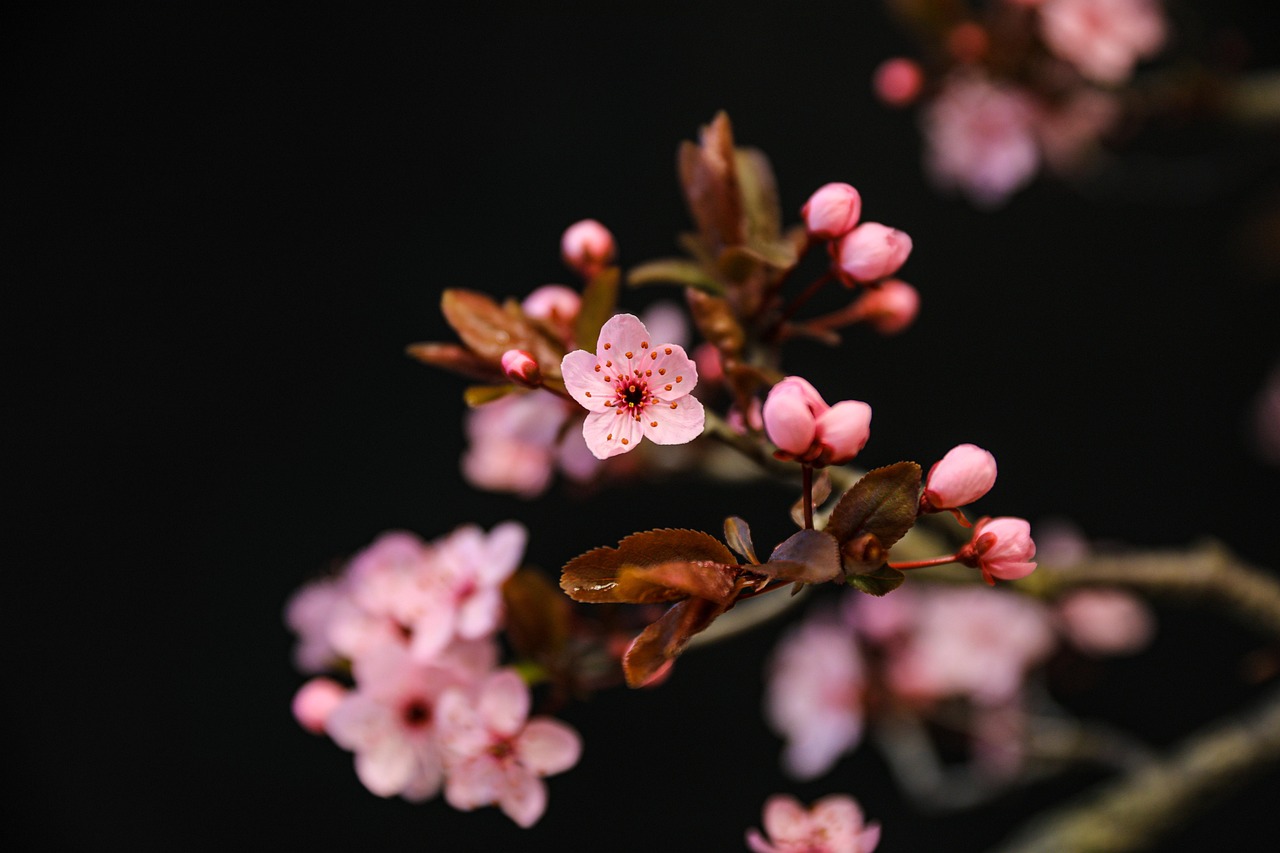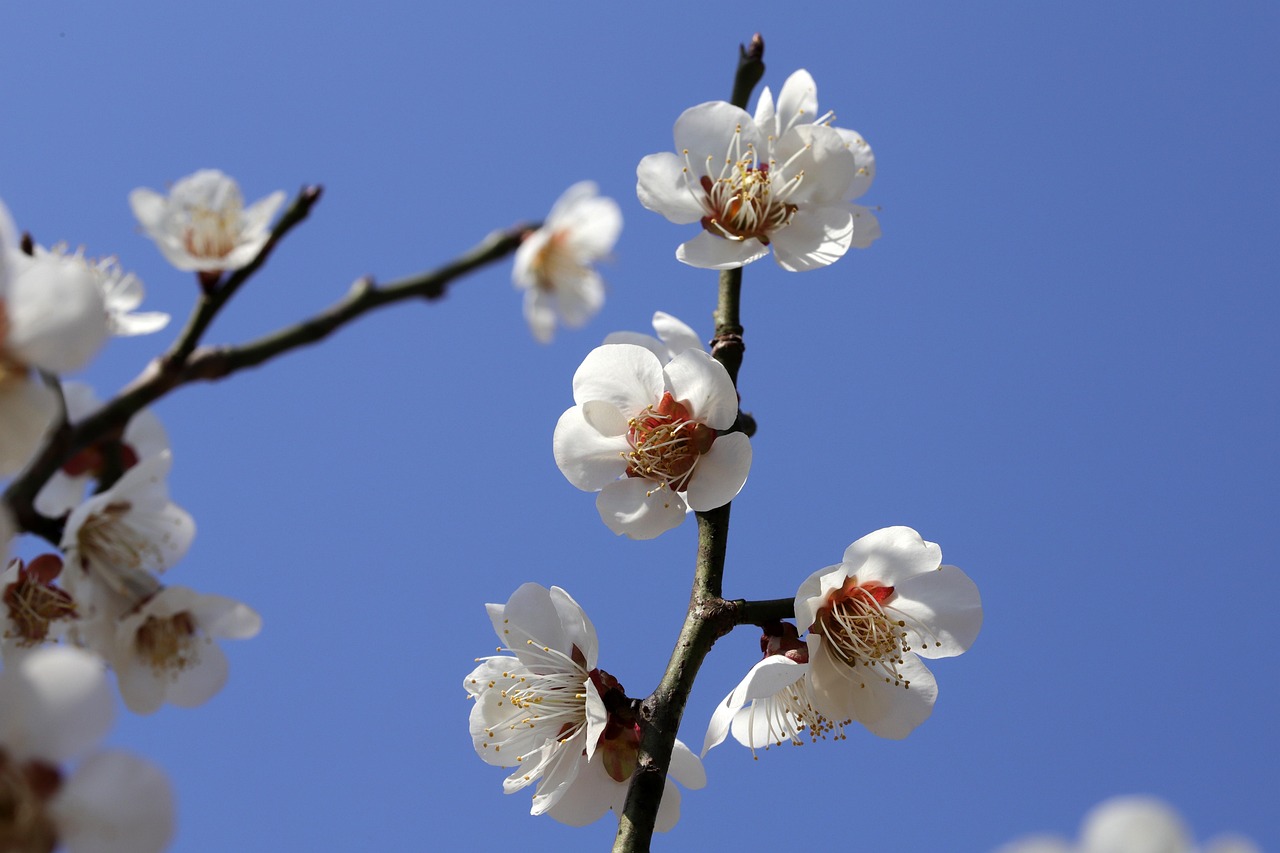Pruning a Victoria plum tree effectively enhances its growth and fruit production. Key techniques include timing the pruning correctly, removing dead or diseased branches, and shaping the tree to allow sunlight and air to reach the inner foliage.
The Victoria plum tree is a popular choice among fruit growers due to its sweet, juicy plums and vigorous growth. Native to England, this tree thrives in temperate climates and is well-known for its heavy yields. However, to ensure a healthy tree that produces quality fruit, proper pruning is essential. Pruning not only helps maintain the shape of the tree but also promotes better air circulation and sunlight penetration, which are vital for growth.

Understanding the right time and method for pruning can make a significant difference in the overall health of your Victoria plum tree. Pruning should ideally be done during the dormant season, typically in late winter or early spring, before new growth begins. This timing minimizes stress on the tree and reduces the risk of disease. Additionally, knowing which branches to cut and how to make clean cuts can greatly impact recovery and fruit production.
Essential Pruning Techniques
There are several key techniques to consider when pruning your Victoria plum tree:
- Timing: The best time to prune is late winter to early spring.
- Tools: Use sharp, clean tools to make precise cuts.
- Technique: Make cuts at a slight angle to prevent water accumulation.
- Removal of Dead or Diseased Wood: Always start by cutting away any dead or diseased branches.
- Shaping: Aim for an open center for better light penetration.
Each of these techniques plays a critical role in promoting healthy growth. For example, pruning during the correct season helps avoid shock to the tree. Using sharp tools ensures that cuts are clean, which facilitates quicker healing. Additionally, when removing branches, it is crucial to focus on those that are crossing or rubbing against each other, as they can create wounds that invite pests and diseases.

Tools Needed for Pruning
Having the right tools will make the process easier and more effective. Here are some essential tools for pruning your Victoria plum tree:
- Hand Pruners: Ideal for small branches up to ¾ inch thick.
- Loppers: Suitable for larger branches up to 2 inches thick.
- Saw: A pruning saw can be used for thicker branches.
- Gloves: Protect your hands while working.
- Ladder: For reaching higher branches safely.
Using the correct tools not only makes pruning easier but also ensures that you can reach all areas of the tree without causing undue harm. Quality tools will last longer and perform better, resulting in cleaner cuts and healthier trees.
Common Mistakes to Avoid
While pruning can greatly benefit your Victoria plum tree, there are common mistakes that should be avoided:

- Avoid heavy pruning in one season; it can shock the tree.
- Do not leave long stubs; these can lead to disease.
- Do not prune during wet conditions; this increases disease risk.
- Avoid overcrowding; maintain an open center for light and air.
By being aware of these pitfalls, you can ensure that your pruning efforts are effective and do not harm your tree. The goal is to create a balanced structure that supports healthy growth and maximizes fruit yield.
Understanding Tree Structure
A good understanding of the structure of your Victoria plum tree will aid in effective pruning. Typically, these trees exhibit a central leader system with side branches growing off at various angles. This structure allows for a balance between strength and flexibility, critical for supporting heavy fruit loads.
The following table summarizes the typical structure of a Victoria plum tree:

| Part of Tree | Description |
|---|---|
| Central Leader | The main trunk; should be straight and strong. |
| Main Branches | Secondary limbs that grow off the central leader. |
| Lateral Branches | Smaller branches that bear fruit; should be spaced evenly. |
| Crown | The upper part of the tree where leaves and fruits grow. |
Recognizing these parts will help you make informed decisions about where to cut and how much to remove. A well-structured tree will produce more fruit and remain healthy over the years.
In summary, understanding the pruning techniques specific to Victoria plum trees is essential for encouraging better growth and enhancing fruit production. With the right timing, techniques, tools, and knowledge about tree structure, you can successfully cultivate a thriving plum tree that yields delicious fruits year after year.
Pruning Techniques for Different Ages of Victoria Plum Trees
Pruning techniques will vary depending on the age and growth stage of your Victoria plum tree. Understanding how to adapt your approach can lead to more fruitful outcomes and healthier trees. Here’s a breakdown of pruning strategies for young, mature, and older trees.
Pruning Young Victoria Plum Trees
Young trees, typically those under three years old, require careful attention to shape their growth. The primary goal is to establish a strong structure that will support future fruit production. Here are some techniques to consider:
- Initial Pruning: When planting a young tree, prune the central leader to encourage a strong upright growth habit.
- Side Branch Management: Select and keep 3-5 strong lateral branches that will become the main scaffold branches. Remove competing leaders that can weaken the tree structure.
- Pinching: Pinch back new shoots in the growing season to encourage bushier growth.
These initial steps will help set the foundation for a healthy tree that can bear fruit in the coming years. It is essential to monitor growth and remove any weak or crossing branches as they appear.
Pruning Mature Victoria Plum Trees
Mature trees, generally those between four and ten years old, require different care as they begin to produce fruit. The focus during this stage shifts to maintaining health and maximizing fruit yield:
- Annual Maintenance: Perform light pruning each year to remove dead, diseased, or damaged wood. This helps prevent disease and encourages new growth.
- Thinning: Thin out crowded branches to improve airflow and sunlight penetration. This will help reduce the risk of fungal diseases.
- Shaping: Maintain an open center by removing inward-growing branches. This encourages a balanced shape and better fruit production.
Mature trees benefit from consistent maintenance. Regularly assessing the tree for any issues can help prevent larger problems down the line.
Pruning Older Victoria Plum Trees
Older trees, those over ten years old, may require more extensive pruning to rejuvenate growth or manage size. The following techniques can help ensure continued productivity:
- Rejuvenation Pruning: Consider cutting back older branches to promote new growth. This process should be gradual over several years to avoid shocking the tree.
- Selective Cutting: Remove about one-third of the older branches each year to encourage new shoots while maintaining enough foliage for photosynthesis.
- Monitoring Health: Keep an eye on signs of disease or decline. Promptly remove affected wood to protect the rest of the tree.
Caring for older trees may require more knowledge and experience. Regularly assessing their condition can help keep them productive for years longer.
The Importance of Proper Cuts
The technique of making proper cuts is crucial during the pruning process. Making clean cuts can significantly impact how well the tree heals and grows after pruning.
Types of Cuts
Here are some common types of cuts you will use when pruning your Victoria plum tree:
- Heading Cuts: These cuts shorten a branch, encouraging branching below the cut point. Heading cuts are useful for shaping the tree and promoting bushier growth.
- Thinning Cuts: Thinning cuts remove entire branches back to their point of origin, allowing more light and air into the canopy. This technique is beneficial for maintaining tree health.
- Cleaning Cuts: These cuts remove dead or diseased wood. Ensure you make these cuts at a point just above healthy tissue to facilitate healing.
| Type of Cut | Description | Purpose |
|---|---|---|
| Heading Cut | A cut that shortens a branch. | Encourages bushier growth. |
| Thinning Cut | A cut that removes an entire branch back to its origin. | Improves air circulation and light penetration. |
| Cleaning Cut | A cut that removes dead or diseased wood. | Promotes tree health and reduces disease spread. |
Understanding when and where to make these cuts is essential for effective pruning. Proper cuts will help your Victoria plum tree thrive and produce abundant fruit.
The Role of Fertilization After Pruning
After pruning, it’s essential to provide your Victoria plum tree with adequate nutrients. Fertilization helps support recovery and encourages new growth:
- Selecting Fertilizer: Use a balanced fertilizer with equal parts nitrogen, phosphorus, and potassium.
- Timing: Apply fertilizer in early spring as new growth begins.
- Application Method: Spread fertilizer evenly around the drip line of the tree to encourage healthy root development.
Fertilization is a critical step that complements your pruning efforts. A well-nourished tree will be more resilient against pests and diseases, ensuring a bountiful harvest in the future.
By applying these techniques and understanding the needs of your Victoria plum tree at different ages, you can foster strong growth and abundant fruit production. Each phase of growth requires specific attention, ensuring your tree remains healthy throughout its life cycle.
Identifying and Managing Pests and Diseases
Maintaining the health of your Victoria plum tree goes beyond pruning and fertilization; it also involves being vigilant about pests and diseases. Regular monitoring can help you catch problems early. Recognizing the signs of trouble is crucial for effective management.
Common Pests of Victoria Plum Trees
Several pests can affect Victoria plum trees, leading to damage and reduced fruit quality. Here are some of the most common pests you might encounter:
- Plum Curculio: This beetle lays eggs in young fruit, causing them to drop prematurely.
- Codling Moth: The larvae bore into the fruit, making them unappetizing and often inedible.
- Aphids: These small insects suck sap from the leaves, leading to yellowing and curling.
- Spider Mites: They create fine webs on leaves, which can cause leaf drop and reduced vigor.
Identifying these pests early can prevent extensive damage. Regular inspections of leaves and fruit are essential to catch infestations before they escalate.
Signs of Infestation
Recognizing the signs of pest infestation is critical. Look for the following indicators:
- Discoloration: Leaves may turn yellow or brown, indicating stress or feeding damage.
- Fruit Damage: Look for holes, tunnels, or premature fruit drop.
- Webbing: Fine webs on leaves suggest spider mite activity.
- Sticky Residue: A sticky film on leaves may indicate aphid presence.
If you notice any of these signs, it’s important to take action quickly to mitigate the damage.
Disease Management
Diseases can also pose a threat to your Victoria plum tree. Here are some common diseases and their symptoms:
- Brown Rot: Characterized by brown spots on fruit, leading to decay.
- Leaf Curl: Caused by a virus that leads to curled leaves and reduced growth.
- Canker: Fungal infections that cause sunken areas on branches, often leading to dieback.
- Powdery Mildew: A white powdery substance on leaves, which can hinder photosynthesis.
Preventive Measures
Preventing pests and diseases is always more effective than treating them after the fact. Here are some strategies to keep your Victoria plum tree healthy:
- Good Hygiene: Clean up fallen fruit and debris around the base of the tree to minimize breeding grounds for pests.
- Proper Pruning: Ensure adequate airflow through the canopy by thinning out crowded branches.
- Pest Barriers: Use physical barriers like floating row covers to protect young trees from pests.
- Regular Inspections: Check your tree regularly for any signs of pests or diseases.
Implementing these preventive measures can significantly reduce the risk of infestations and diseases, keeping your tree healthy and productive.
Irrigation Techniques for Optimal Growth
Irrigation is another critical factor in ensuring your Victoria plum tree thrives. Proper watering practices can improve growth, enhance fruit quality, and increase resilience against pests and diseases.
Watering Requirements
The watering needs of your Victoria plum tree can vary based on weather conditions, soil type, and age. Here are some guidelines for effective irrigation:
- Younger Trees: In the first few years, young trees need consistent moisture. Aim for deep watering once a week during dry spells.
- Mature Trees: Once established, mature trees require less frequent watering. Monitor soil moisture and water deeply every two to three weeks during dry periods.
- Soil Type Considerations: Sandy soils drain quickly, while clay soils retain moisture. Adjust your watering schedule accordingly.
Irrigation Techniques
There are various methods to irrigate your Victoria plum tree effectively:
- Drip Irrigation: This method delivers water directly to the root zone, minimizing evaporation and runoff.
- Soaker Hoses: These hoses allow water to seep slowly into the soil, providing consistent moisture without overwatering.
- Manual Watering: If using a hose or watering can, ensure that water reaches deep into the soil rather than just wetting the surface.
Choosing the right irrigation method will depend on your specific circumstances. Consider factors such as tree age, soil type, and local climate when deciding how to water your tree.
Signs of Water Stress
Monitoring your tree for signs of water stress is vital. Symptoms to look for include:
- Wilting Leaves: Leaves may droop or curl when the tree is not receiving enough water.
- Crisp Edges: Dry edges on leaves indicate dehydration.
- Premature Fruit Drop: Insufficient water can lead to early dropping of immature fruit.
If you observe any of these symptoms, it may be time to adjust your irrigation practices. Ensuring your Victoria plum tree receives adequate hydration will support its overall health and productivity.
The combination of proper pruning techniques, pest and disease management, and effective irrigation will significantly contribute to the growth and yield of your Victoria plum tree. By staying proactive in these areas, you can cultivate a thriving fruit tree that produces delicious plums year after year.
Additional Care and Maintenance Tips
In addition to pruning, pest management, and irrigation, there are several other practices you can implement to ensure your Victoria plum tree remains healthy and productive. Proper care and maintenance play a significant role in the longevity and fruitfulness of your tree.
Soil Management
The quality of the soil in which your Victoria plum tree grows is critical for its health. Here are some tips for managing soil effectively:
- Soil Testing: Conduct a soil test to assess pH levels and nutrient content. A pH level between 6.0 and 6.8 is ideal for plum trees.
- Organic Matter: Incorporate organic matter, such as compost, into the soil to improve its structure and fertility.
- Mulching: Apply a layer of mulch around the base of the tree to retain moisture, suppress weeds, and maintain soil temperature.
Healthy soil promotes strong root development and overall tree vigor. Regularly amend the soil as needed to ensure it meets the nutritional needs of your Victoria plum tree.
Seasonal Care Schedule
Creating a seasonal care schedule can help you stay organized and ensure you are meeting the needs of your tree throughout the year. Here’s a simple breakdown:
| Season | Care Tasks |
|---|---|
| Spring | Prune as needed, apply fertilizer, check for pests, and begin regular watering. |
| Summer | Monitor for pests, ensure adequate watering, and apply mulch if necessary. |
| Fall | Harvest fruit, clean up fallen debris, and prepare for winter by mulching around the base. |
| Winter | Conduct any necessary pruning, assess tree health, and protect from extreme cold if needed. |
Following a seasonal care schedule will help you stay on top of your tree’s needs and promote its long-term health.
Understanding Pollination Needs
Victoria plum trees are self-fertile but can benefit from cross-pollination with other plum varieties. Here are some details regarding their pollination:
- Self-Fertility: While they can produce fruit without another tree nearby, cross-pollination often leads to larger yields.
- Recommended Companion Trees: Consider planting other plum varieties like Stanley or Santa Rosa to enhance pollination.
- Pollen Availability: Planting multiple trees will attract more pollinators like bees, which is beneficial for fruit set.
If you’re interested in maximizing your harvest, consider adding another compatible plum variety to your garden.
Conclusion
Caring for a Victoria plum tree involves much more than just pruning. By understanding the principles of irrigation, pest management, soil care, and pollination, you can create an environment that fosters strong growth and abundant fruit production. The combination of these practices ensures that your tree remains healthy and productive over its lifespan.
The key takeaways include:
- Regular Pruning: Essential for maintaining shape, health, and productivity.
- Pest and Disease Management: Vigilance is crucial in identifying and addressing issues early.
- Irrigation Practices: Proper watering techniques support overall tree health.
- Soil Quality: Healthy soil is fundamental for growth; regular testing and amendments are recommended.
- Seasonal Care: A structured care schedule helps ensure that all aspects of tree health are addressed throughout the year.
By implementing these comprehensive techniques and strategies, you will cultivate a thriving Victoria plum tree that yields delicious fruits year after year. Enjoy the process of nurturing your tree and reaping the rewards of your hard work!
